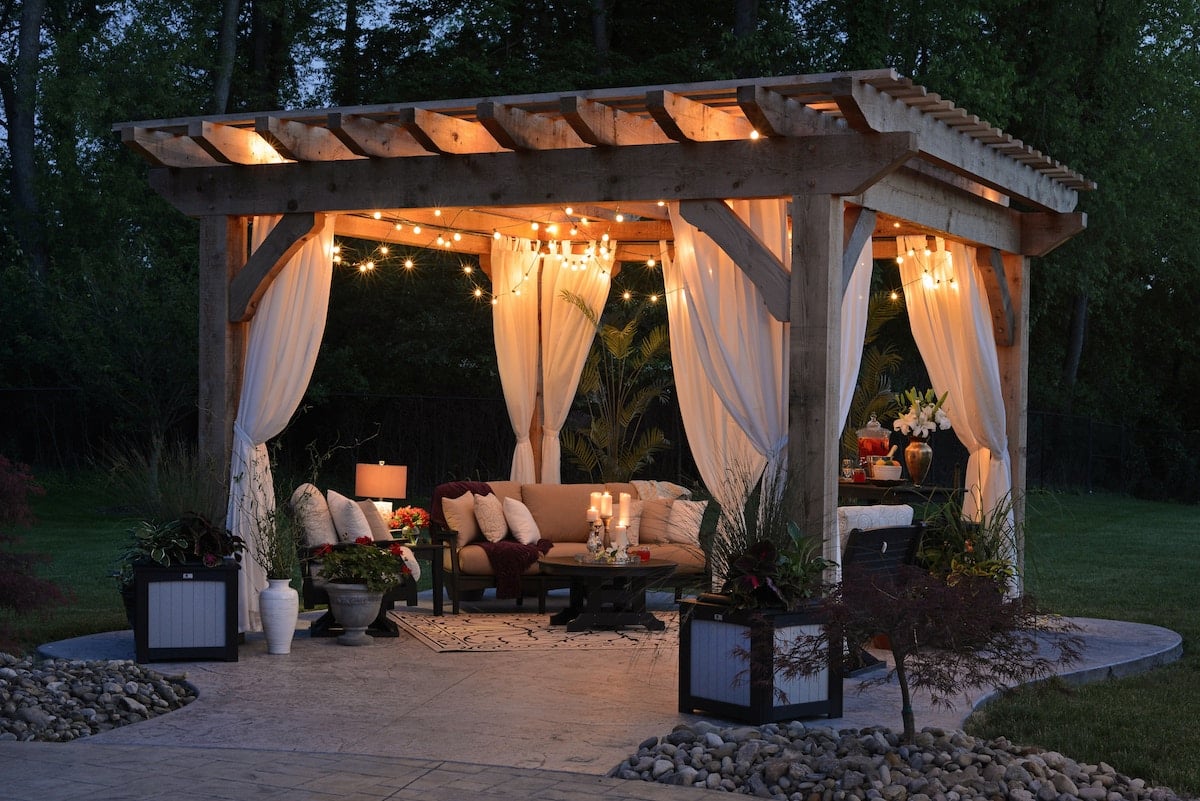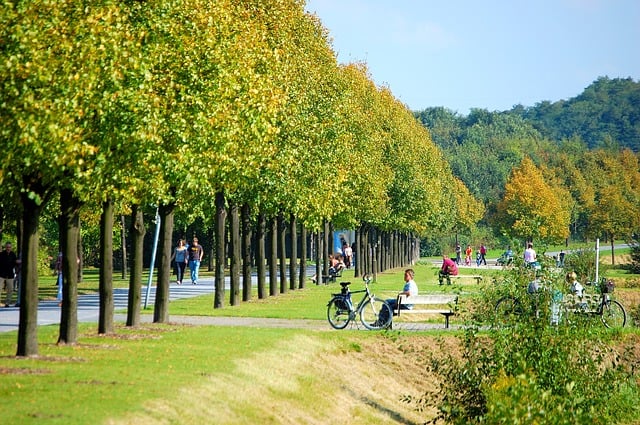Creating vivacious landscape designs can be challenging, given New England’s intense four seasons. Massachusetts weather ranges from bitterly cold nights in the middle of winter to hot and humid summer days. This extreme variety of temperatures can put stress on plants. The four tips below will help you create a beautiful landscape in New England’s fickle climate.

1. Find plants that fit your climate zones
The USDA classifies each area of the United States by zone numbers ranging from zone 1, being the coldest, to zone 18, being the hottest. These zones can help you determine what plants will thrive where you live. Boston and eastern Massachusetts are in Zone 5 and 6. Areas south of Boston near the Islands can even get into Zone 7. The average temperature range for the area is used to calculate its zone number.
Plant finder websites such as this one from the Missouri Botanical Garden will allow you to search by zone number for perennials and annuals that will grow well where you are. You can also pick trees and shrubs from cooler zones. Some plants have struggled to adapt as average summer temperatures have risen over the past few years. An example of this is the Canadian hemlock, which has typically grown well in the Boston area but has been difficult to maintain recently.
Handpicked Related Content:
2. Understand your microclimate
Wind and soil conditions play into the microclimate of your property. These factors are very important to understand. New England often has sandy, or clay filled soil which can present some challenges for new gardeners. You can procure a soil test through UMass-Amherst or other schools with agricultural programs to learn more about your soil.
Once you know what kind of soil you have, don’t try to do plantings that will be fighting against your natural climate. Instead, look for plants that will thrive in your soil.
Additionally, know what the wind and sun conditions are like around your property. If it is always windy, pick hardy plants that will handle the wind well. If you have low sun conditions, choose plants that don’t require a lot of sunlight.

3. Evaluate humidity
Summers in New England are typically quite humid. However, with the climate changing in recent years, this isn’t always the case. It is important to pay attention to the moisture in both the air and soil. If it is too moist, plants can grow fungus; if it is not moist enough, plants can die from lack of water. The best way to address this is by having some form of irrigation ready for the dry summer months and monitoring your plants closely for fungal growth during wet seasons.
4. Use native plants
The best way to landscape is to use plants that are native to New England. Your local nursery has plants that are indigenous to your climate. The employees can also help you figure out what plants will work best in your yard. While native plants are preferable, plants that are native to areas with a similar climate — like certain parts of the Pacific Northwest — will also flourish in New England.
Bonus: Some plants we like:
- Azaelias and Rhododendron maximum are from the same genus. Both are beautiful shrubs that thrive in Massachusetts and work well in woodlands. They have elegant, showy flowers and prefer shady areas — Rhodo Max in particular is great for shade and screening.
- Clethra, also known as Summer sweet, have beautiful, long pink or white blooms. They are good for a yard with lots of clay and shade.
- Itea is a deciduous shrub that grows to be about three or four feet tall. It has long, drooping white flowers. In the fall the leaves turn a beautiful red color.
- Oak leaf hydrangea plants are native to the southern U.S., but they are hardy and grow well in the Northeast. There are nearly 70 species, meaning you can find the right one for your needs. Most have large colorful blooms, perfect for a great fall color or some shade and screening.
Assessing and understanding the macro and micro climate where you live will help you produce amazing landscaping in your yard. While New England weather can be challenging for the amateur gardener, there are many plants that perform well in each season, making your yard beautiful year round. To learn more about the essential elements for creating a spectacular outdoor living space, be sure to download our free ebook.

Moodscapes LLC is an organic landscape design and service company with a focus on helping you extend your life outdoors to enjoy activities on your own, as a family and with friends. We create opportunities for you to commune with and find joy and peace in nature and to live in an ecologically friendly and healthy environment. Please explore our landscape services and the portfolio that demonstrates many examples of our work.














